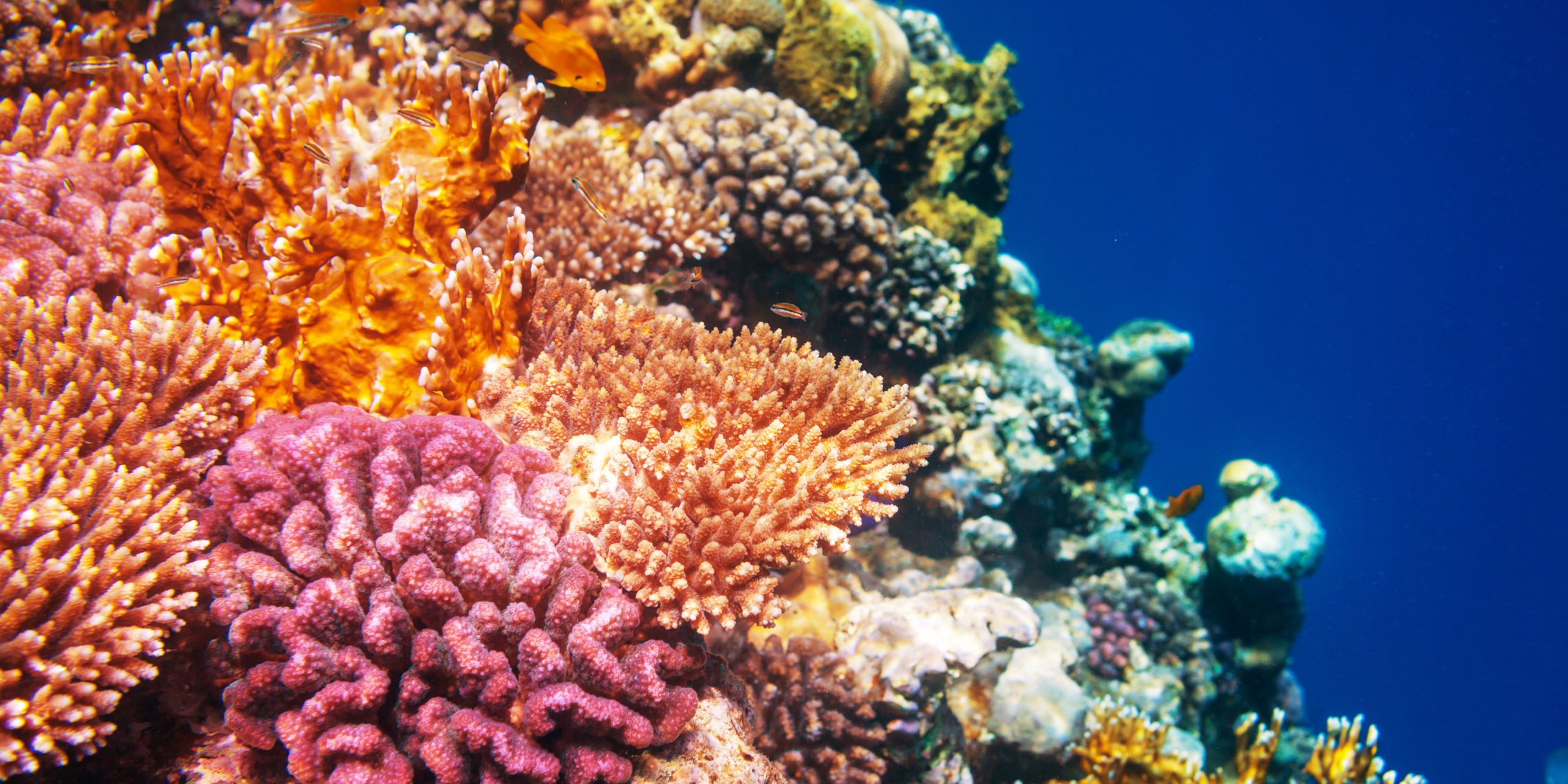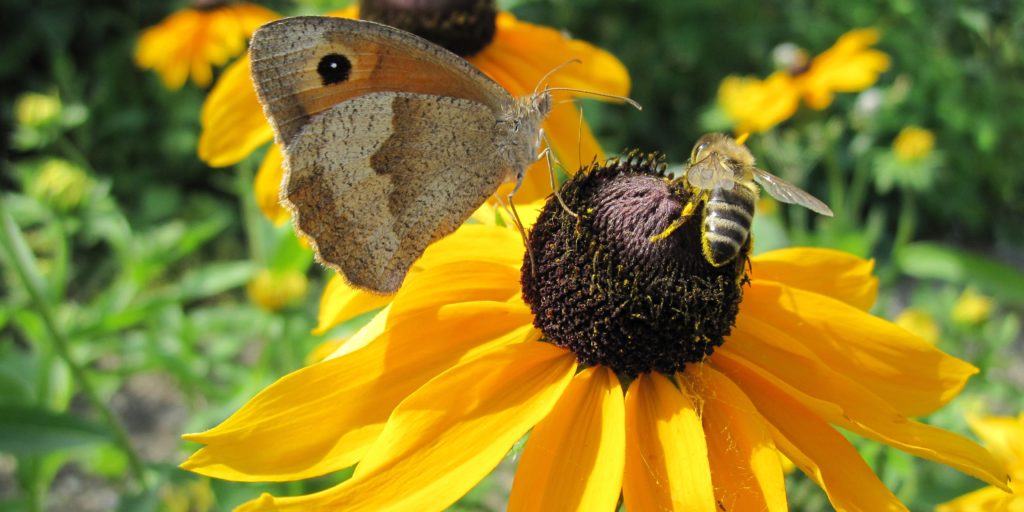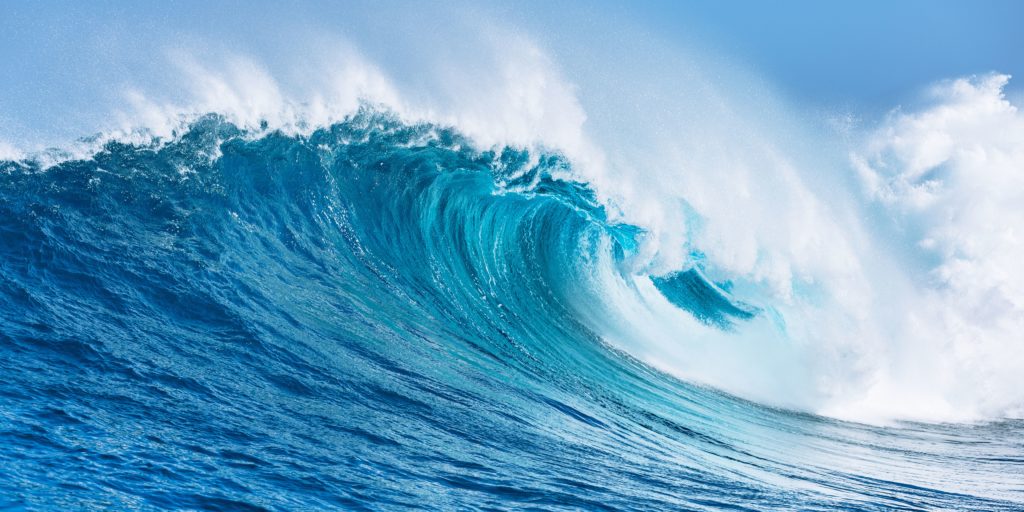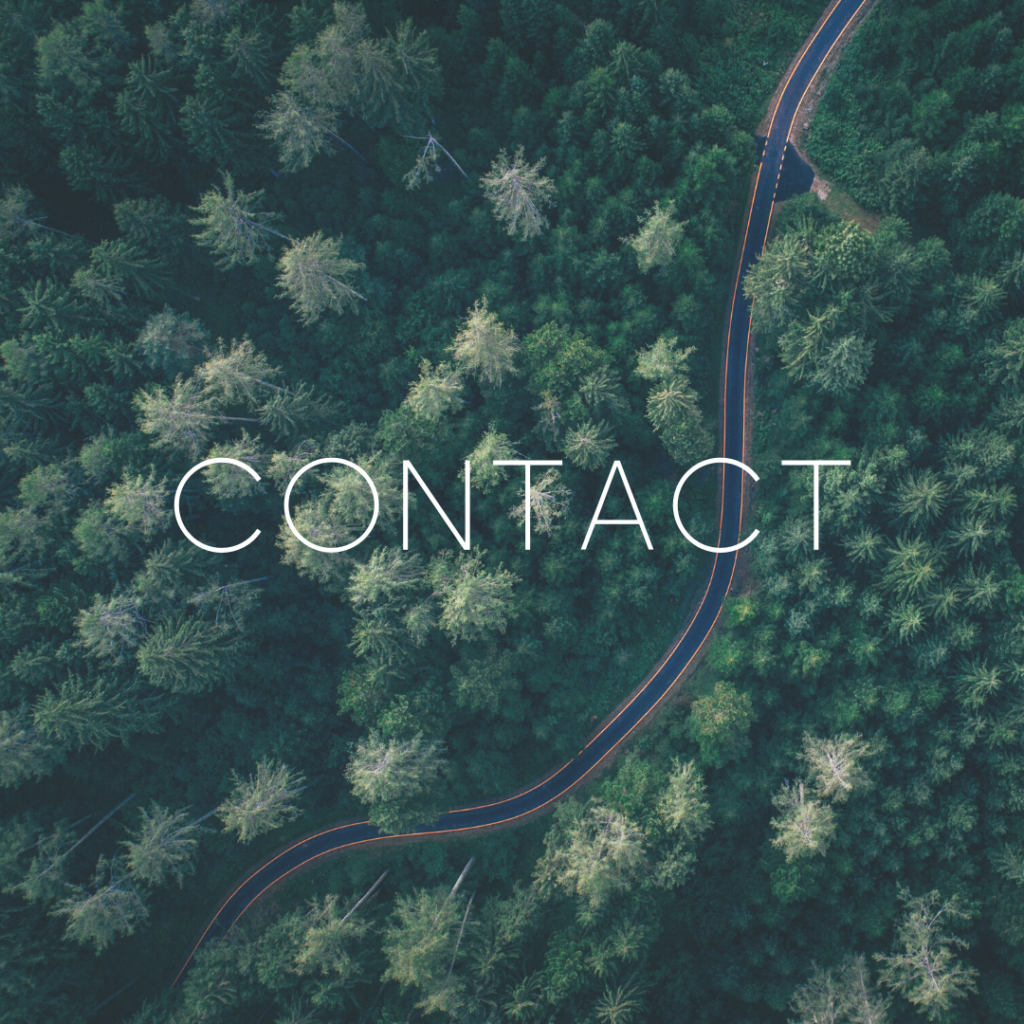What is coral?
Coral is neither a plant nor a rock, but a marine animal belonging to the phylum Cnidaria and the class Anthozoa, like jellyfish and sea anemones. It is composed of thousands of tiny organisms called polyps. Each polyp is a microscopic animal with a mouth surrounded by stinging tentacles that capture plankton and other small food particles.
The polyps live in colonies and secrete an external skeleton, primarily made of calcium carbonate (CaCO₃), which forms the rigid structure of the reef. There are two main types of coral:
• Hard corals (Scleractinians): These are the ones that build reefs with their external skeleton made of calcium carbonate (CaCO₃).
• Soft corals (Alcyonarians): They lack a solid limestone skeleton and do not contribute to reef formation, but they play an important ecological role.
Symbiosis with zooxanthellae
Coral lives in symbiosis with unicellular microalgae of the genus Symbiodinium, known as zooxanthellae. These algae live within the tissues of the polyps and perform photosynthesis, producing oxygen and nutrients (glucose, amino acids) essential for coral growth. In return, the polyp provides protection and nutrients (carbon dioxide and nitrogenous waste) necessary for the growth of the zooxanthellae.
This symbiosis explains why corals typically live in warm waters between 23°C and 29°C, in shallow depths from 0 to 60 meters, in clear waters low in nutrients: they depend heavily on sunlight.
Coral Reproduction: A fascinating natural ballet in two words
Corals have two modes of reproduction: asexual and sexual, which ensure both local colony growth and genetic diversity necessary for adaptation.
-
Asexual reproduction occurs through budding, allowing the colony to grow.
-
Sexual reproduction involves the fusion of male and female gametes to produce a microscopic larva called a planula. This mode of reproduction promotes genetic diversity, making corals more resilient to diseases and climate change.
Ecological role of coral and interactions with marine fauna
Coral reefs, though covering a minimal area of the ocean (<0.1%), are among the most productive and complex ecosystems in the world. They are often compared to tropical forests due to their exceptional biodiversity and their structural importance in the marine ecosystem.
The coral reef as a three-dimensional habitat
Coral colonies, by secreting their calcium carbonate skeletons, build a three-dimensional physical structure that provides:
-
Protection from predators: The nooks, caves, and crevices offer shelter for small fish, invertebrates, and larvae to hide.
-
Breeding and spawning areas: Many fish species come to lay their eggs in the protected areas of the reef.
-
Hunting territories: Predators find a high concentration of prey in these areas.
-
Cleaning stations: Certain fish (like cleaner wrasses) maintain stations where they remove parasites from other fish.
Symbiotic relationships with fish and invertebrates
Coral reefs are complex ecosystems where a multitude of interconnected species coexist. Among these relationships, those between corals and fish, as well as certain invertebrates, play a central role in the stability and resilience of the reef. These interactions often take the form of symbioses, where each partner benefits from the other. These collaborations shape the ecological balance of tropical reefs.
-
Herbivorous fish
Examples: Parrotfish (Scaridae), Surgeonfish (Acanthuridae)
These fish graze on algae growing on the reef. Without them, algae could smother corals by blocking sunlight and occupying space. They maintain a critical balance between algae and corals, a role that has become even more crucial in degraded reefs. -
Territorial fish and bio-engineers
Examples: Damselfish (Pomacentridae)
Some species of fish cultivate small “gardens” of algae on dead or living corals, which they actively defend. While this behavior can sometimes harm living corals, it can also promote the recolonization of certain areas by pioneering organisms. -
Corallivorous Fish
Examples: Butterflyfish (Chaetodontidae), certain Triggerfish
These species feed directly on coral tissue or mucus produced by polyps. On a small scale, this doesn’t necessarily harm the reef and can even stimulate the regeneration of polyps by removing diseased parts. -
Cleaner Fish
Examples: Cleaner wrasses (Labroides dimidiatus), Cleaner shrimp (Lysmata amboinensis)
These animals offer a cleaning service to other fish by removing their skin parasites. These interactions enhance the health of fish populations, and cleaning stations become areas of intense social activity on the reef.
Other major ecological interactions with corals
Interactions with marine invertebrates
🦐 Symbiotic shrimp and crabs
- Some species, like pistol shrimp (Alpheus spp.) or guardian crabs (Trapezia spp.), live directly within coral colonies.
- These species protect the corals from predators like the crown-of-thorns starfish (Acanthaster planci) by repelling them or pinching them.
- In return, the corals provide food and shelter.
🐚 Burrowing worms and mollusks
- Certain species (polychaete worms, bivalves, sponges) settle within the coral’s calcium carbonate skeleton, creating tunnels.
- This weakens the structure but can also promote water and nutrient circulation.
🐙 Cephalopods, sea urchins, and starfish
- Sea urchins regulate algae populations, but certain starfish, such as the crown-of-thorns (Acanthaster planci), feed on living corals. During population outbreaks, they can destroy vast stretches of reef.
- The crown-of-thorns starfish is considered a key predator when in balance, but becomes destructive when it proliferates.
🦠 Microbial interactions: The coral microbiome
Corals are associated with a complex community of bacteria, fungi, and viruses known as the coral holobiont.
These microorganisms assist in digestion, nitrogen cycling, immune defence against pathogens, and resistance to environmental stress. The disruption of this microbiome, often caused by pollution or warming, is linked to coral diseases.
Interactions with birds and marine mammals (indirect)
🐦 Seabirds (indirect nutritional interaction)
- Although seabirds do not directly interact with corals, they play an important indirect role in the health of the reefs.
- On some atolls, seabirds deposit nutrient-rich excrement (guano) on islands. These nutrients can wash into the reefs, promoting coral and fish productivity.
- A study in Polynesia found that reefs near bird-rich islets had 50% higher fish biomass.
Though indirect, seabirds actively participate in the ecological dynamics of reefs.
🐬 Marine mammals
- Marine mammals (dolphins, dugongs) don’t directly interact with corals, but their presence signals a healthy coral ecosystem.
- Dugongs and turtles can also influence nearby seagrass beds, which interact with reefs via nutrient flows.
Human interactions and ecosystem services provided to humanity
Humans have multiple and ambivalent interactions with corals:
- Negative: Pollution, destruction, over-exploitation, irresponsible tourism.
- Positive: Reef restoration, creation of protected areas, development of medical biomaterials derived from corals.
Corals do not live in isolation. They are at the center of a dense ecological network, involving mutualistic, commensal, competitive, and sometimes parasitic interactions. Their survival depends on this finely balanced biological equilibrium. Coral reefs provide significant ecosystem services to humanity, such as:
- Food resources for over 500 million people worldwide.
- Jobs and income related to artisanal fishing and tourism.
- Bioactive molecules from marine organisms for pharmaceutical research (anticancer, antiviral).
- Natural barriers against storms and tsunamis, limiting coastal damage.
The trophic chain of coral reefs
The trophic chain of coral reefs is a complex example of ecological interactions, with corals playing a central role. At the base of the chain are the zooxanthellae, the symbiotic micro algae living within the tissues of corals. These algae perform photosynthesis, producing essential nutrients for the corals, but they also provide a food base for many species. Coral polyps, by capturing plankton and other small food particles in the water, directly feed on these organisms and contribute to the reef’s productivity.
Next, herbivorous fish, such as parrotfish and surgeonfish, graze on algae growing on the corals, thus regulating their growth and maintaining balance within the ecosystem. These fish serve as food for carnivorous or omnivorous fish, like butterflyfish or lion fish, which feed on small fish and invertebrates. These predators, in turn, become prey for larger predators such as sharks or tuna, which occupy the top of the trophic chain.
Thus, corals and their biodiversity form the cornerstone of the marine trophic chain, supporting not only a rich diversity of marine life but also the human communities that depend on marine resources.
Coral reefs: Living architectures
A coral reef develops very slowly, growing at an average rate of 1 to 3 cm per year. Some reefs are thousands of years old. They house an exceptional biodiversity: fish, mollusks, crustaceans, sponges, starfish, and even sharks and sea turtles.
Coral reefs cover about 284,000 km², less than 0.1% of the ocean’s surface, yet they:
- Host 25% of marine biodiversity, with over 4,000 species of fish recorded.
- Provide habitat, nursery, and breeding grounds for many species.
- Protect coasts against erosion and tropical storms: they absorb up to 97% of wave energy.
- Offer ecosystem services valued in the hundreds of billions of dollars per year (fishing, tourism, medicine).
Famous examples
- Great Barrier Reef (Australia): The largest coral reef in the world, visible from space, stretching 2,300 km.
- Raja Ampat Reefs (Indonesia): Home to the greatest known marine biodiversity.
- Red Sea (Egypt, Sudan, Saudi Arabia): Particularly resistant to coral bleaching.
Protective role of coral for islands and coastal areas
Coral reefs act as natural barriers against wave energy, tropical storms, and even tsunamis. By absorbing up to 97% of wave power, they significantly reduce coastal erosion, protect beaches, mangroves, lagoons, and preserve human infrastructure located along the coast. On low-lying islands and atolls, which are often threatened by rising sea levels, reefs are literally the first line of defence. Without them, many islands in the Pacific or the Caribbean could face flooding or even disappearance.
Reefs also contribute to the formation of coral sediments that nourish beaches and stabilise the coastline. Therefore, beyond their ecological role, corals are geological engineers that shape and protect shorelines.
However, a quarter of the world’s coral reefs have already suffered irreversible damage, and two-thirds are threatened due to human activities that degrade them.
Major threats to coral reefs
Corals are extremely sensitive to environmental changes, and their main threats include:
Climate change
- Coral Bleaching: Triggered by an increase in water temperature of just 1–2°C for a few weeks.
Example: In 2016, the Great Barrier Reef experienced a massive bleaching event, affecting 93% of its reefs. - Ocean Acidification: Caused by the absorption of atmospheric CO₂, it reduces corals’ ability to calcify their skeletons, weakening their structure.
Pollution
- Marine Pollution: Including sewage, fertilizers, and industrial discharges, leads to eutrophication, which suffocates corals by blocking the light needed for zooxanthellae photosynthesis.
Additionally, plastics—especially microplastics—damage polyps, promote inflammation, and increase the risk of diseases such as black band disease, which rapidly destroys coral tissues.
Destructive fishing and uncontrolled mass tourism
- Use of Cyanide or Explosives: These methods of capturing fish destroy coral reefs.
- Muroami Fishing: This involves striking the coral with sticks, which severely damages the reef.
- Bottom Trawling: This practice also contributes to coral destruction.
- Boat Anchors: Anchors can physically break colonies, especially in shallow areas.
- Untrained Divers or Snorkelers: People often accidentally step on corals while swimming or diving.
- Illegal Coral Harvesting: Some tourists collect coral as souvenirs or jewelry, which further depletes the reefs.
- Over-tourism: An influx of visitors leads to increased waste, sewage discharge, and greater pressure on local resources.
Given these threats, it is urgent to take action to preserve these fragile ecosystems. Fortunately, many conservation and restoration initiatives have been launched to protect coral reefs and halt their degradation. These efforts are essential to maintaining marine biodiversity and the ecosystem services they provide to humanity.
Conservation and restoration initiatives
In response to the urgent need to protect coral reefs, numerous initiatives have emerged:
Marine protected areas
- Over 7% of the oceans are now designated as protected areas, but only a portion of these are effectively monitored and managed.
Restoration projects
- Coral gardening: Coral fragments are cultivated in nurseries and then transplanted onto damaged reefs to help regenerate the ecosystems.
- Innovative techniques: Artificial structures made of steel or concrete, electrification (Biorock), and the selection of heat-resistant corals are being used to aid restoration.
- Synthetic biology and genetic selection: These methods aim to create corals more tolerant to extreme temperatures, helping them survive in the face of climate change.
Citizen engagement
- Using Sunscreens without oxybenzone or octinoxate: These chemicals are harmful to corals, so using reef-safe sunscreens is crucial.
- Supporting NGOs: Organisations such as Coral Restoration Foundation, Reef Check, and Coral Guardian work tirelessly to conserve coral reefs, and they rely on public support.
- Reducing carbon footprint: Individuals can lower their carbon footprint and consume seafood responsibly to reduce pressure on marine ecosystems.
Respecting corals during vacation: Small effort, big impact
When traveling near coral reefs, it is essential to adopt responsible behaviours to avoid causing damage:
- Avoid walking on or touching corals: Corals are delicate organisms and can easily be harmed by human contact.
- Maintain a safe distance while swimming or snorkelling: Be mindful of your movements to avoid disturbing the corals.
- Use reef-safe sunscreens: Choose sunscreens that do not contain harmful chemicals like oxybenzone or octinoxate, as these substances can disrupt coral growth.
- Support eco-friendly tour operators: Choose tour operators that are committed to environmental protection and sustainable practices.
- Do not buy souvenirs from reefs: Avoid purchasing coral or rare shells as souvenirs, as this practice contributes to the depletion of coral reefs.
By following these guidelines, we can all contribute to the preservation of coral reefs and help ensure that these vital ecosystems continue to thrive for future generations.
Conclusion
Corals, the true engineers of the oceans, are far more than mere marine formations. They are the builders of coral reefs, ecosystems of incredible biological richness, and natural protectors of coastlines. Through their symbiosis with zooxanthellae, these organisms live in a delicate balance between nature and environmental conditions, providing essential ecosystem services to humanity, such as coastal protection and food resources.
However, the threats of climate change, ocean acidification, pollution, and poorly managed human activities put these ecosystems in jeopardy. Corals, sensitive to the slightest temperature or pollution changes, are now facing dangers such as bleaching. It is therefore imperative that we recognize their crucial role in the health of the oceans and global ecological balance.
Despite these challenges, conservation and restoration initiatives are emerging worldwide. Efforts to protect coral reefs, such as the creation of marine protected areas, coral gardening, and the use of innovative techniques, are promising steps towards preserving these “marine rainforests.” It is also essential that we, as individuals, adopt responsible behaviors to reduce our environmental impact and support restoration efforts.
Coral, although fragile, is a vital resource that we must protect. If corals thrive, the entire marine ecosystem benefits from their existence. Protecting coral reefs means safeguarding biodiversity, but also the future of the oceans and generations to come.
Illustrative photo: from canva©
Sources:
- WWF France, « Les coraux, espèces en danger » : rappel de la biodiversité corallienne et des menaces actuelles
- Article Wikipédia « Récif corallien » (mise à jour avril 2025) : description des récifs, de leur formation, biodiversité et menaces.
- Étude EPFL sur la centralisation des données environnementales des récifs coralliens, notamment sur les effets des vagues de chaleur et la résilience.
- Coral Guardian, article sur la mémoire écologique des coraux et leur adaptation au réchauffement climatique.
- Reef Resilience Network, « Écologie des récifs coralliens » : synthèse sur la complexité et la richesse des écosystèmes coralliens.
- Le Monde, « Protéger les récifs coralliens : un défi crucial pour l’avenir » (décembre 2024) : enjeux de conservation et importance économique.
- Encyclopédie de l’Environnement, « Coraux : les ingénieurs des océans sont menacés » (janvier 2025) : rôle écologique, symbiose, menaces et perspectives.
- Protéger les récifs coralliens: un défi crucial pour l’avenir
- La course contre la montre pour créer des coraux résistants














